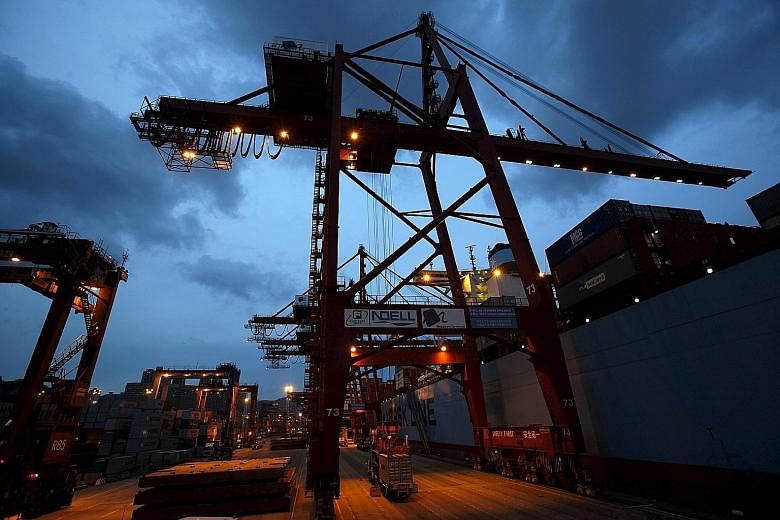HONG KONG • Falling container business and stiff competition from China have shaken the prominent position of Hong Kong's port on the global trade map.
The island city slid one spot last year to fifth position from 2014, The Wall Street Journal (WSJ) reported, recording a drop in container volume for the 18th straight month. Its port traffic fell 9.5 per cent through all of 2015.
China's slowdown has partly contributed to the fall, which is also a result of newer and cheaper ports springing up in Shenzhen, Shanghai and Ningbo which are closer to China's manufacturing zones and can unload cargo faster.
They can also accommodate a new class of megaships, which are too big to fit into Hong Kong's shallow channels fully loaded, but can enter deep-water ports along the Chinese coastline with ease.
"As a leading hub port, the fact that the Hong Kong government couldn't have pre-empted the impact of larger ships is quite surprising," Mr Timothy Ross, an analyst at Credit Suisse, told WSJ.
"Once people started moving away, the connection opportunities begin to unwind."
Competition is especially tough from Shenzhen port, which has deeper water and more space to accommodate bigger ships.
As a result, cargo-handling costs are 5 per cent to 20 per cent lower than those in Hong Kong, said UBS Securities analyst Robin Xu.
The slide is a troubling prospect for Hong Kong's economy, which last year grew at its slowest rate since 2008.
The port employs nearly 100,000 people, and fuels the logistics and trade sectors, which make up nearly a quarter of the city's economic activity. Hundreds of companies depend on heavy shipping volumes.
Hong Kong government officials said work is on for a project to dredge its harbour and approach channels to a depth of 17.5m, from the current 15m to accommodate new ultra-large container vessels at all tides.
Finding more space is the only way to bring in more cargo over the long term, they said.
"Ports must ask, do you want to be a major player in the future and what is the entry ticket to play in that game?
"They need to keep costs under control, but they also must make the investment to be able to handle large vessels and to handle them fast," said chief executive Lars Jensen of SeaIntelligence Consulting, a shipping research group.
"That is a tough equation to solve."

